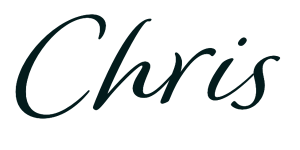What is the First Home Savings Account (FHSA)
The First Home Savings Account (FHSA) is a new registered plan developed by the Canadian government to assist Canadian first-time home buyers. The plan opened for investors on April 1, 2023, and to qualify, an individual must be at least 18 years of age, not more than 71 years old on December 31 of the year opening the account, a resident of Canada, and a first-time home buyer. The plan can stay open for a total of 15 years or until the year that an investor turns 71.
The real benefits of the FHSA are that it combines some of the best features of an RRSP and a TFSA. Investors who have an RRSP know that one of the main benefits of an RRSP is the tax-deductible contributions. An RRSP is intended to be untaxed at contributions and taxed at withdrawals, and this is why investors receive tax credits for contributing to an RRSP. Whereas, in a TFSA, contributions are not tax-deductible, and investors do not receive a tax credit at the end of the year, however, they are not taxed upon withdrawal. The FHSA combines both benefits from these registered accounts to offer Canadian first-time home buyers the ability to receive tax credits based on their contributions as well as make eligible withdrawals tax free.
FHSA Breakdown
The annual contribution limit for an FHSA is $8,000, with a lifetime limit of $40,000. The maximum contribution carryforward limit is $8,000 per year.
For example, an investor that contributes $5,000 in their first year of opening an FHSA will have unused contribution room of $3,000 and is able to carry this amount forward for a total contribution limit of $11,000 in the following year ($3,000 carryforward + $8,000 annual contribution limit). If an investor does not contribute to the plan in their first year, the total contribution limit in the following year is $16,000 ($8,000 carryforward + $8,000 annual contribution limit). If an investor contributes $3,000 in their first year of opening the account, they have total contribution room of $13,000 in their second year ($5,000 carryforward + $8,000 annual contribution limit), and if they contribute $10,000 in their second year, they will have a total contribution room of $11,000 ($3,000 carryforward + $8,000 annual contribution limit).
Unlock the Power of Informed Investing with 5i Research!
DIY investing doesn't have to mean going it alone. At 5i Research, we're your trusted partner in navigating the stock market. Our platform offers comprehensive stock and market research, empowering you to make smart investment decisions.
- Investor Q&A: Have burning questions? Get answers from our team of experts and fellow investors in our dedicated Q&A section.
- Research Reports: With over 60 meticulously researched Canadian stocks, our reports offer in-depth analysis, giving you the confidence to invest wisely.
- Model Portfolios, Alerts, Forums, Portfolio Tracking, and Much More...
Upside and Downfalls of the FHSA
While the FHSA and RRSP share some similarities, contributions made to an FHSA during the first 60 days of the calendar year are not tax deductible on the prior year’s income tax return. To withdraw from an FHSA, there are certain requirements that need to be met, including a written agreement from the account holder to buy or build a qualifying home with a completion date before October 1st of the year following the day of withdrawal. Below are some of the main similarities and differences between Canada’s three main registered account types:
Source: 5i Research, rbcwealthmanagement.com, td.com
We can see that the FHSA combines the best elements of both the RRSP and TFSA, and has a higher annual contribution limit than the TFSA. Although, an FHSA does have an upper limit on how much can be deposited ($40,000) and the maximum carryforward amount is not all unused contribution room from prior years like the RRSP and TFSA. The FHSA also has benefits over the home buyers’ plan, where Canadians can withdraw up to $35,000 from their RRSP. With the home buyers’ plan, individuals need to repay these funds over 15 years, whereas in an FHSA, eligible withdrawals do not need to be paid back. Overall, the FHSA is an interesting new registered plan offered by the government of Canada to assist individuals with tax-efficient savings for purchasing their first home. Each investor has unique preferences and needs, but for individuals that are focusing on saving for their first home purchase, we feel that the FHSA is a better vehicle than the RRSP or TFSA.
Research for Today, Invest for Tomorrow.

Twitter: @5iChris






Comments
Login to post a comment.